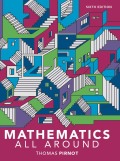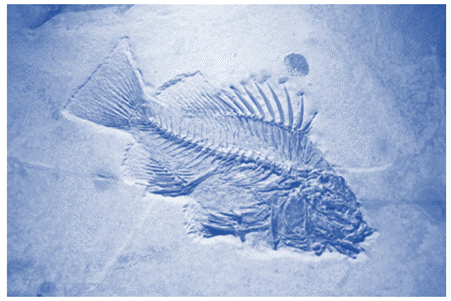
Concept explainers
Challenge Yourself
Living plants and animals all contain the chemical element carbon. A certain percentage of that carbon is radioactive, and scientists believe that the parentage has remained constant for thousands of years. Radioactive carbon decays, so that when an animal dies, a tiny bit of the
radioactive carbon is lost each year. It is known that the amount of radioactive carbon that remains in a fossil at the end of a year is approximately 0.99988 of the amount that was present at the beginning. Thus, the following dynamical system describes radioactive carbon
decay in a fossil:
This system behaves exactly like the compound interest situation (except the amount or radioactive carbon is decreasing), so it is easy to see that after k years, the amount of radioactive carbon in the fossil will be
radioactive carbon at time 0 will be 1; that is,

Carbon dating. A leaf of a fossilized plant is found that contains 60% of the original radioactive carbon that was present. To the nearest 100 years, how old is the plant?
Want to see the full answer?
Check out a sample textbook solution
Chapter 7 Solutions
EBK MATHEMATICS ALL AROUND
- Please help with a detailed explaination how to get the answerarrow_forwardMATLAB. Awnser written questions (*) in the comments. Null, Rank, and most functions outside of rref() and disp() are not allowed!arrow_forwardMATLAB. Awnser written questions (*) in the comments. Null, Rank, and most functions outside of rref() and disp() are not allowed! Solutions must be given manually! Elementary form means to reduce to RREF manually, without rref(). Please see other attached image for explanationarrow_forward
- In ΔEFG, e = 520 inches, ∠E=26° and ∠F=107°. Find the area of ΔEFG, to the nearest 10th of an square inch.arrow_forwardIn ΔXYZ, ∠Y=90° and ∠X=25°. ∠ZWY=73° and XW=7.2. Find the length of WY to the nearest 100th. Figure not necessarily drawn to scale. XYWZ25°73°7.2?arrow_forwardIn ΔABC, a = 380 inches, ∠A=72° and ∠B=9°. Find the area of ΔABC, to the nearest 10th of an square inch.arrow_forward
 Glencoe Algebra 1, Student Edition, 9780079039897...AlgebraISBN:9780079039897Author:CarterPublisher:McGraw Hill
Glencoe Algebra 1, Student Edition, 9780079039897...AlgebraISBN:9780079039897Author:CarterPublisher:McGraw Hill
 College Algebra (MindTap Course List)AlgebraISBN:9781305652231Author:R. David Gustafson, Jeff HughesPublisher:Cengage Learning
College Algebra (MindTap Course List)AlgebraISBN:9781305652231Author:R. David Gustafson, Jeff HughesPublisher:Cengage Learning Trigonometry (MindTap Course List)TrigonometryISBN:9781337278461Author:Ron LarsonPublisher:Cengage Learning
Trigonometry (MindTap Course List)TrigonometryISBN:9781337278461Author:Ron LarsonPublisher:Cengage Learning
 Algebra for College StudentsAlgebraISBN:9781285195780Author:Jerome E. Kaufmann, Karen L. SchwittersPublisher:Cengage Learning
Algebra for College StudentsAlgebraISBN:9781285195780Author:Jerome E. Kaufmann, Karen L. SchwittersPublisher:Cengage Learning





